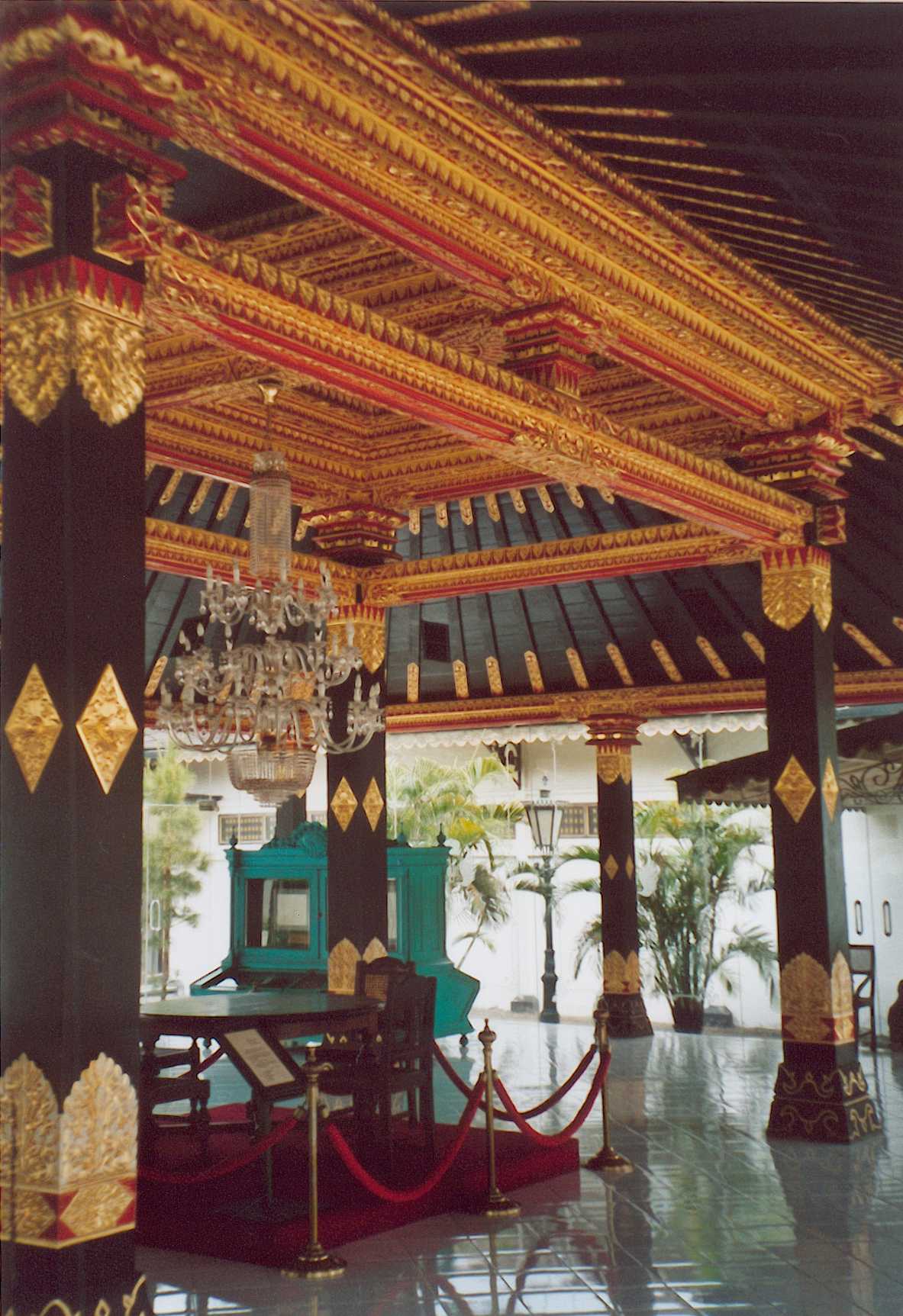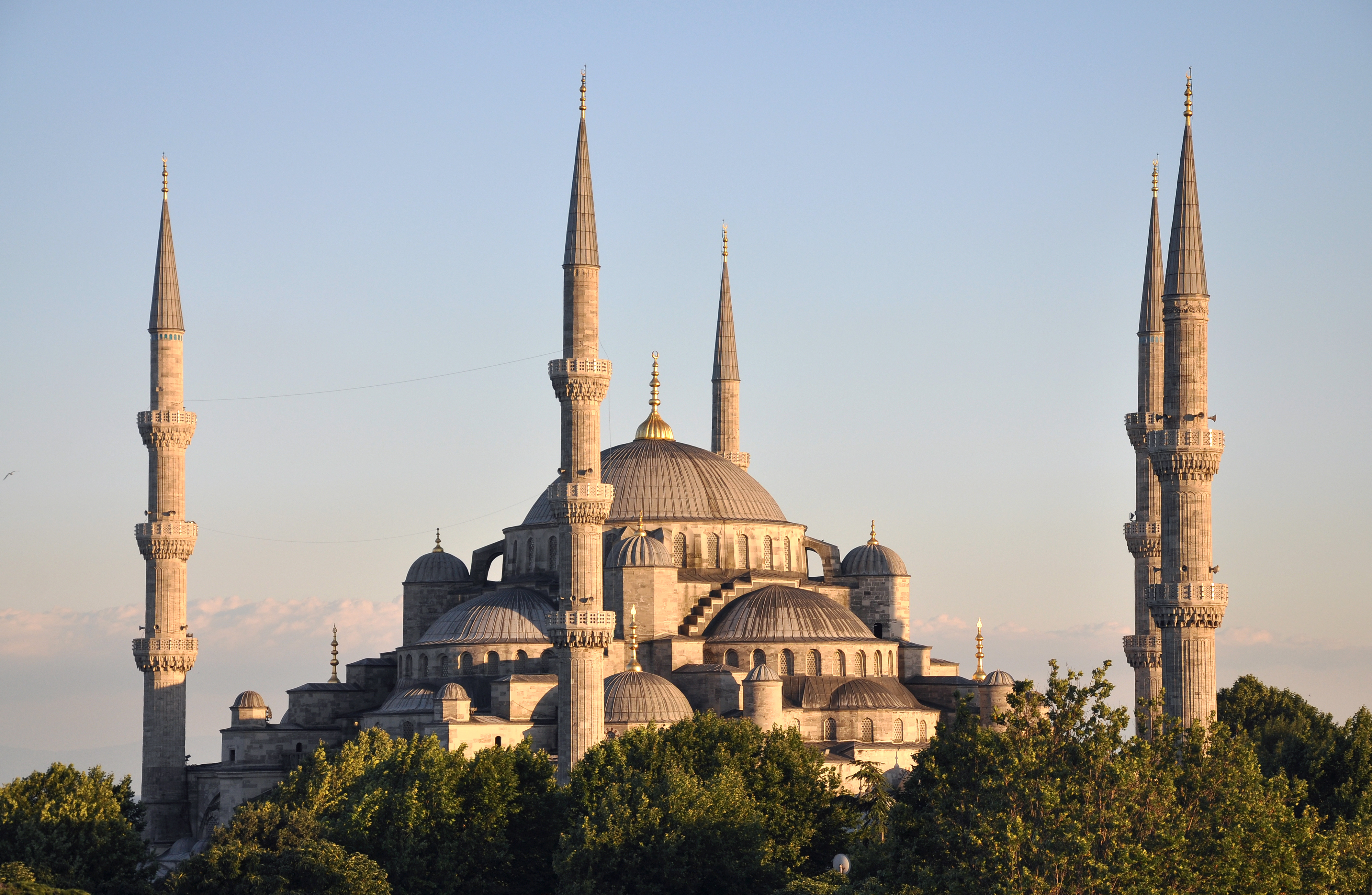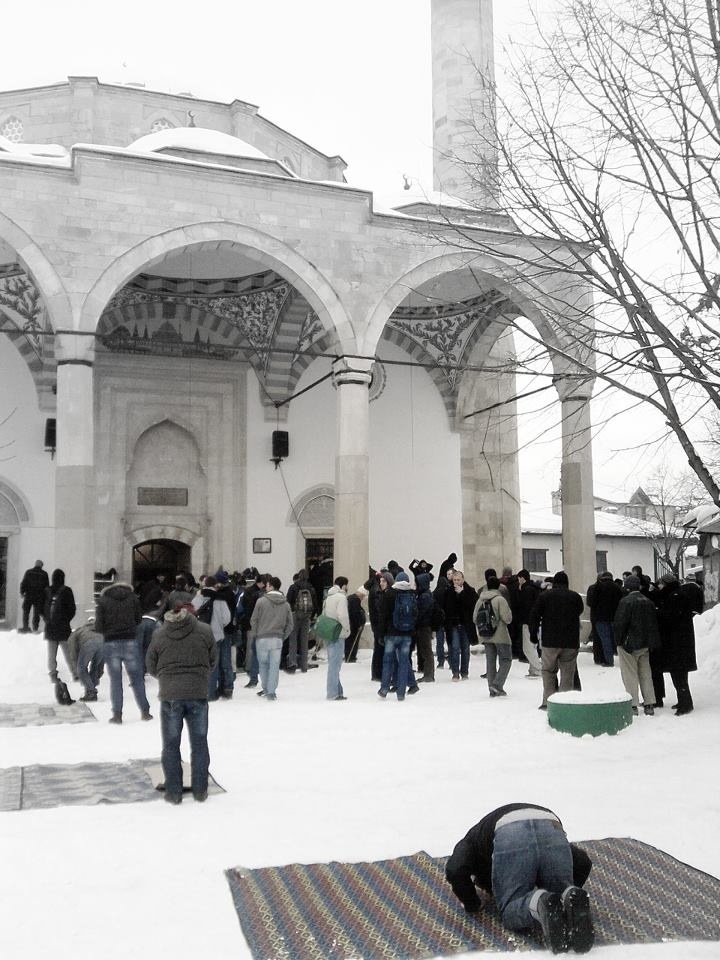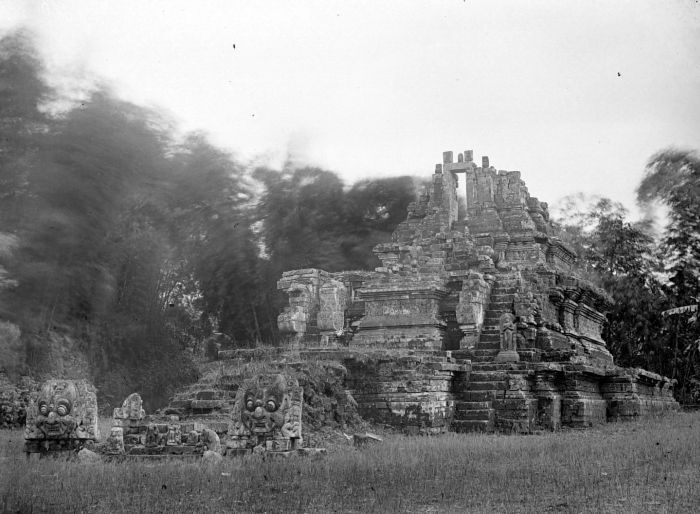|
Red Mosque Of Panjunan
The Red Mosque of Panjunan (Indonesian ''Masjid Merah Panjunan'', Javanese ''Masjid Abang'') is a Javanese mosque located in the village of Panjunan, Cirebon Regency, West Java, Indonesia. This 15th-century mosque with its Hindu architecture typical of Java is one of the oldest mosque in Indonesia. History The Mosque of Panjunan was first established in 1480 by Syarif Abdurrahman, also known as ''Pangeran Panjunan'' ("The Prince of Panjunan"). Syarif Abdurrahman was an Arab who led a group of immigrants from Baghdad. Later, Syarif Abdurrahman became a student of Sunan Gunung Jati, one of the Wali Songo, or nine saints of Islam revered in Indonesia. The Mosque of Panjunan was instrumental in the Islamization of Cirebon. In the beginning, the Red Mosque of Panjunan was named al-Athya Musalla. Because of its surrounding red brick perimeter wall, the mosque was also known as the Red Mosque or Masjid Abang. In the beginning, the mosque was a small Musalla with an area of . The mos ... [...More Info...] [...Related Items...] OR: [Wikipedia] [Google] [Baidu] |
Cirebon Regency
Cirebon Regency is a regency ''(kabupaten)'' of West Java, Indonesia. Sumber is its capital. It covers 1,070.29 km2 and had a population of 2,068,116 at the 2010 censusBiro Pusat Statistik, Jakarta, 2011. and 2,270,621 at the 2020 census; the official estimate as at mid 2021 was 2,290,967. These area and population figures exclude those of Cirebon City, which is an independent administration, although totally surrounded by the regency on its landward side. The Cirebon region is renowned for the production of various types of mangoes. There are plans to support the expansion of mango production in the region both for export as well as for the domestic market. Mango production is currently concentrated in just a few parts of the regency. Local farmers and officials believe there is considerable potential to expand production to other nearby parts of the locality. Etymology Being on the border of Sundanese (i.e., West Java) and Javanese (i.e., Central Java) cultural regions, m ... [...More Info...] [...Related Items...] OR: [Wikipedia] [Google] [Baidu] |
Singhasari
Singhasari ( jv, ꦏꦫꦠꦺꦴꦤ꧀ꦱꦶꦔ꧀ꦲꦱꦫꦶ, translit=Karaton Singhasari or , id, Kerajaan Singasari) was a Javanese Hindu kingdom located in east Java between 1222 and 1292. The kingdom succeeded the Kingdom of Kediri as the dominant kingdom in eastern Java. The kingdom's name is cognate to Singosari district of Malang Regency, located several kilometres north of Malang city. Etymology Singhasari (alternate spelling: ''Singosari'') was mentioned in several Javanese manuscripts, including Pararaton. According to tradition, the name was given by Ken Arok during the foundation of the new kingdom to replace its old name, Tumapel, located in a fertile highland valley which today corresponds to the area in and around Malang city. It derives from Sanskrit word ''singha'' which means "lion" and ''sari'' which in Old Javanese could mean either "essence" or "to sleep". Thus Singhasari could be translated as "essence of lion" or "sleeping lion". Although the l ... [...More Info...] [...Related Items...] OR: [Wikipedia] [Google] [Baidu] |
Javanese Culture
Javanese culture is the culture of the Javanese people. Javanese culture is centered in the provinces of Central Java, Yogyakarta and East Java in Indonesia. Due to various migrations, it can also be found in other parts of the world, such as Suriname (where 15% of the population are of Javanese descent), the broader Indonesian archipelago region, Cape Malay, Malaysia, Singapore, Netherlands and other countries. The migrants bring with them various aspects of Javanese cultures such as music, traditional dances and art of shadow play. The migration of Javanese people westward has created the coastal Javanese culture that is distinct from inland Sundanese culture in West Java and Banten. Being the largest ethnic group, the Javanese culture and people influence Indonesian politics and culture, a process sometimes described as Javanisation. Literature Javanese literature tradition is among the earliest and the oldest surviving literature traditions in Indonesia. The trans ... [...More Info...] [...Related Items...] OR: [Wikipedia] [Google] [Baidu] |
Mosques In West Java
A mosque (; from ar, مَسْجِد, masjid, ; literally "place of ritual prostration"), also called masjid, is a place of prayer for Muslims. Mosques are usually covered buildings, but can be any place where prayers (sujud) are performed, including outdoor courtyards. The first mosques were simple places of prayer for Muslims, and may have been open spaces rather than buildings. In the first stage of Islamic architecture, 650-750 CE, early mosques comprised open and closed covered spaces enclosed by walls, often with minarets from which calls to prayer were issued. Mosque buildings typically contain an ornamental niche (''mihrab'') set into the wall that indicates the direction of Mecca (''qiblah''), ablution facilities. The pulpit (''minbar''), from which the Friday (jumu'ah) sermon (''khutba'') is delivered, was in earlier times characteristic of the central city mosque, but has since become common in smaller mosques. Mosques typically have segregated spaces for men and w ... [...More Info...] [...Related Items...] OR: [Wikipedia] [Google] [Baidu] |
Archaeological Sites In Indonesia
Archaeology or archeology is the scientific study of human activity through the recovery and analysis of material culture. The archaeological record consists of Artifact (archaeology), artifacts, architecture, biofact (archaeology), biofacts or ecofacts, archaeological site, sites, and cultural landscapes. Archaeology can be considered both a social science and a branch of the humanities. It is usually considered an independent academic discipline, but may also be classified as part of anthropology (in North America – the four-field approach), history or geography. Archaeologists study human prehistory and history, from the development of the first stone tools at Lomekwi in East Africa 3.3 million years ago up until recent decades. Archaeology is distinct from palaeontology, which is the study of fossil remains. Archaeology is particularly important for learning about prehistoric societies, for which, by definition, there are no written records. Prehistory includes ove ... [...More Info...] [...Related Items...] OR: [Wikipedia] [Google] [Baidu] |
Eid Prayers
Eid prayers, also referred to as Salat al-Eid ( ar, صلاة العيد), are holy holiday prayers in the Islamic tradition. The literal translation of the word "Eid" in Arabic is "festival" or "feast" and is a time when Muslims congregate with family and the larger Muslim community to celebrate. There are generally two central Eids that take place in accordance with the Islamic lunar calendar (hence the additional name Șālat al-’Īdayn ( ar, صلاة العيدين "Prayer of the Two Eids"): * Eid al-Fitr ( ar, عيد الفطر, links=no), also known as the "Smaller Eid" is a celebration marking the end Ramadan, the Islamic holy month of fasting, welcoming the new month of Shawwal and lasts for a period of three days. Mandatory charity, or Zakat, specifically Zakat al-Fitr (Zakat of Eid Al-Fitr) is offered to the poor by every financially-able Muslim (preferably prior to the offering of the prayer) to ensure that those who are less fortunate may also participate in ... [...More Info...] [...Related Items...] OR: [Wikipedia] [Google] [Baidu] |
Friday Prayer
In Islam, Friday prayer or Congregational prayer ( ar, صَلَاة ٱلْجُمُعَة, ') is a prayer (''ṣalāt'') that Muslims hold every Friday, after noon instead of the Zuhr prayer. Muslims ordinarily pray five times each day according to the sun's sky path regardless of time zones. ''Jumu’ah'' means Friday in the Arabic language. In many Muslim countries, the weekend is inclusive of Fridays, while in others, Fridays are half-days for schools and some workplaces. Meaning It is one of the most exalted Islamic rituals and one of its confirmed obligatory acts. Obligation There is consensus among Muslims regarding the Friday prayer (''salat al-jum‘ah'') being '' wajib'' - required - in accordance with the Quranic verse, as well as the many traditions narrated both by Shi’i and Sunni sources. According to the majority of Sunni schools and some Shiite jurists, Friday prayer is a religious obligation, but their differences were based on whether its obligation is ... [...More Info...] [...Related Items...] OR: [Wikipedia] [Google] [Baidu] |
Minbar
A minbar (; sometimes romanized as ''mimber'') is a pulpit in a mosque where the imam (leader of prayers) stands to deliver sermons (, '' khutbah''). It is also used in other similar contexts, such as in a Hussainiya where the speaker sits and lectures the congregation. Etymology The word is a derivative of the Arabic root ''n-b-r'' ("to raise, elevate"); the Arabic plural is ''manābir'' ( ar, مَنابِر). Function and form The minbar is symbolically the seat of the imam who leads prayers in the mosque and delivers sermons. In the early years of Islam, this seat was reserved for the Islamic prophet Muhammad and later for the caliphs who followed him, each of whom was officially the imam of the whole Muslim community, but it eventually became standard for all Friday mosques and was used by the local imam. Nonetheless, the minbar retained its significance as a symbol of authority. While minbars are roughly similar to church pulpits, they have a function and posit ... [...More Info...] [...Related Items...] OR: [Wikipedia] [Google] [Baidu] |
East Java
East Java ( id, Jawa Timur) is a province of Indonesia located in the easternmost hemisphere of Java island. It has a land border only with the province of Central Java to the west; the Java Sea and the Indian Ocean border its northern and southern coasts, respectively, while the narrow Bali Strait to the east separates Java from Bali by around . Located in eastern Java, the province also includes the island of Madura (which is connected to Java by the longest bridge in Indonesia, the Suramadu Bridge), as well as the Kangean islands and other smaller island groups located further east (in the northern Bali Sea) and Masalembu archipelagos in the north. Its capital is Surabaya, the second largest city in Indonesia, a major industrial center and also a major business center. Banyuwangi is the largest regency in East Java and the largest on the island of Java. The province covers an area of , and according to the 2010 Census, there were 37,476,757 people residing in the ... [...More Info...] [...Related Items...] OR: [Wikipedia] [Google] [Baidu] |
Jago Temple
Jago temple ( Indonesian: ''Candi Jago'') is a 13th-century Hindu temple from the Singhasari kingdom in East Java, Indonesia, located about 22 km from Malang Malang (; ) is a landlocked List of regencies and cities of Indonesia, city in the Indonesian Provinces of Indonesia, province of East Java. It has a history dating back to the age of Singhasari, Singhasari Kingdom. It is the second most popul .... The Nagarakretagama written in 14th century mentioned this temple, as ''Jajaghu'' (English: "majestic"), as one of the temples visited by King Hayam Wuruk during his royal tour across East Java. The Singhasari King Vishnuvardhana was deified as Shiva, in the form of Bodhisattva Avalokitesvara, here after his death in 1268. The temple's bas-reliefs depict scenes from the ''Kunjarakarna'', ''Parthayajna'', ''Arjunavivaha'', and ''Krishnayana''. The name of Adityawarman appears in 1343 on an image of the Bodhisattva Manjusri. See also * Candi of Indonesia * ... [...More Info...] [...Related Items...] OR: [Wikipedia] [Google] [Baidu] |
Paduraksa
Paduraksa, also known as kori is a type of gateway covered with towering roof that can be found in the island of Java and Bali, Indonesia. This architectural feature is commonly found in buildings from the classical Hindu-Buddhist period of Indonesia. Paduraksa marks the threshold into the most sacred space (the inner sanctum) within a religious compound, a cemetery, or a palace. In Balinese architecture, an elaborately decorated towering paduraksa is often built as the temple's most imposing structure. Form A paduraksa is basically a gateway in the form of a candi. The structure consists of three parts: the base, where a flight of steps is located; the body where the entrance opening is located; and the crown, with its stepped profile characteristic of a candi. The entrance opening is sometimes equipped with a door made of finely carved wood. One of the oldest surviving paduraksa gates is Bajang Ratu in Trowulan, an elegant red-brick paduraksa gate dating from the mid-14th c ... [...More Info...] [...Related Items...] OR: [Wikipedia] [Google] [Baidu] |
Mihrab
Mihrab ( ar, محراب, ', pl. ') is a niche in the wall of a mosque that indicates the '' qibla'', the direction of the Kaaba in Mecca towards which Muslims should face when praying. The wall in which a ''mihrab'' appears is thus the "qibla wall". The '' minbar'', which is the raised platform from which an imam (leader of prayer) addresses the congregation, is located to the right of the mihrab. Etymology The origin of the word ''miḥrāb'' is complicated and multiple explanations have been proposed by different sources and scholars. It may come from Old South Arabian (possibly Sabaic) ''mḥrb'' meaning a certain part of a palace, as well as "part of a temple where ''tḥrb'' (a certain type of visions) is obtained," from the root word ''ḥrb'' "to perform a certain religious ritual (which is compared to combat or fighting and described as an overnight retreat) in the ''mḥrb'' of the temple." It may also possibly be related to Ethiopic ''məkʷrab'' "temple, sa ... [...More Info...] [...Related Items...] OR: [Wikipedia] [Google] [Baidu] |




.jpg)

_p183_MIMBAR_IN_DJAMÄA_EL-KEBIR_(cropped).jpg)


.jpg)